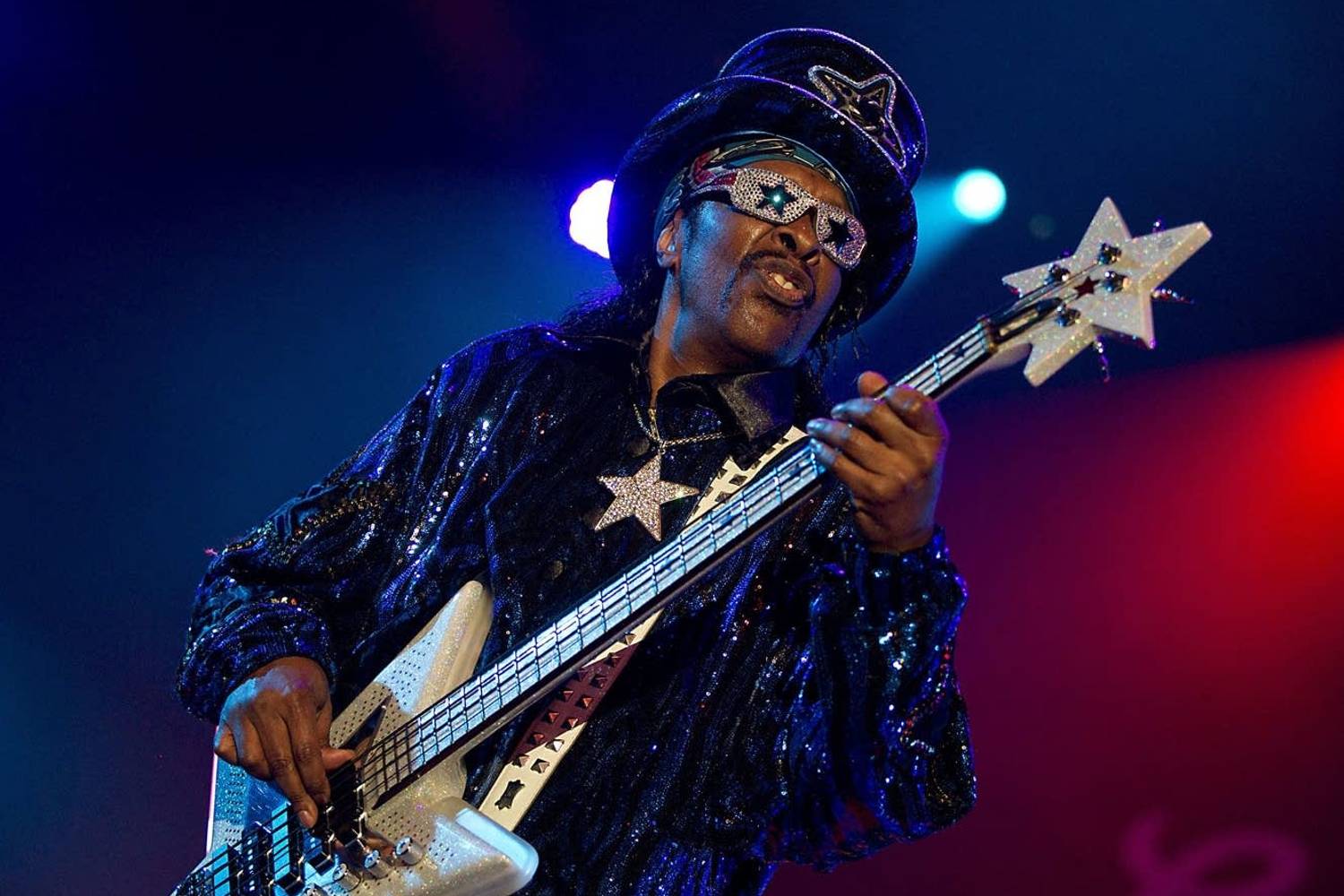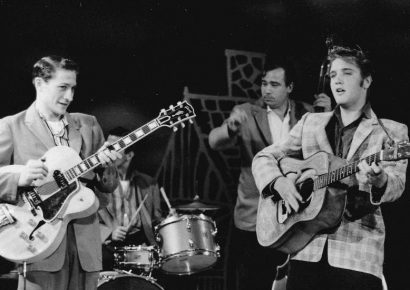A crash course on the funk with Bootsy
When it comes to funkin’, few have done it harder than Bootsy Collins. Kicking off his career by joining James Brown’s backing group The JBs in 1969, Bootsy would go on to change the face of music forever with his bass playing in George Clinton’s funk conglomerate Parliament-Funkadelic, adopting a groove heavy style with an emphasis on the down beat and slap bass stylings.
As well as enjoying an illustrious solo career, Bootsy has also experienced years of success as a studio gun for hire, and experienced a new wave of popularity and critical acclaim with the G-Funk movement spearheaded by Dr. Dre and Snoop Dogg in the 1990’s.
Read all the latest features, columns and more here.
In short, he’s a deadset legend. To celebrate one of his most famous groups Parliament, we take a geez at the gear of one of the funkiest men alive – it’s Bootsy, baby.
Bass Guitars
Fender Jazz Bass
Before he was drafted by the Godfather of Soul James Brown to join his new backing group The JBs, Bootsy reportedly played bass on a $29 Silvertone guitar, stringing the cheap instrument with four strings so he could lay down grooves to his older brother’s guitar parts. Upon joining the JBs at the age of 18, Brown decided that Bootsy needed a “real big boy bass,” purchasing him a late ’60s sunburst Fender Jazz Bass, with Bootsy using the instrument to lay down iconic lines such as ‘Get Up (I Feel Like Being A) Sex Machine’, ‘Soul Power’ and ‘The Grunt’.

Fender Precision Bass
After his tenure with James Brown and The JBs came to an end in 1972, Bootsy, along with his brother Catfish, joined George Clinton’s cosmic funk conglomerate Parliament-Funkadelic, playing on several seminal albums with both bands including Funkadelic’s One Nation Under A Groove and Parliament’s Mothership Connection. Throughout the ’70s, Bootsy alternated between his Fender Jazz Bass and a 1975 Fender Precision, which was decked out with a custom psychedelic finish and a Jazz Bass pickup in the bridge position for a fat slice of extra stank.

The Star Bass
As he continued to embrace funk superstardom throughout the ’70s, Bootsy decided he needed a bass to match his outgoing personality and the visual Afrofuturistic aesthetic adopted by Parliament-Funkadelic. Although it was long rumoured to have been beamed down to Bootsy from the depths of outer space, Bootsy’s original Star Bass was built for him on consignment by Larry Pless, who detailed the creation of the instrument in an extensive blog post which you can read here here.
“He (Bootsy) told me that he had an idea for a bass guitar he wanted made,” said Larry. “He showed me a little drawing he had sketched on a napkin. It was a bass guitar with the body and the headstock shaped as stars. Then we went over the other details of the guitar such as hardware, pickups, wiring, finish and of course a big mirrored pickguard. I told Bootsy that I needed some time to work out the design and the price. This was a fun project for me. I drew several different versions of the Star Bass until I was happy with the way it looked. The problem was it did not look like the sketch Bootsy had given me. Bootsy wanted a star shaped bass and I wanted to blend the star idea with a more traditional guitar design. I also changed the headstock to be be more functional. This design is known as the star burst design. The price was somewhere around $900.”
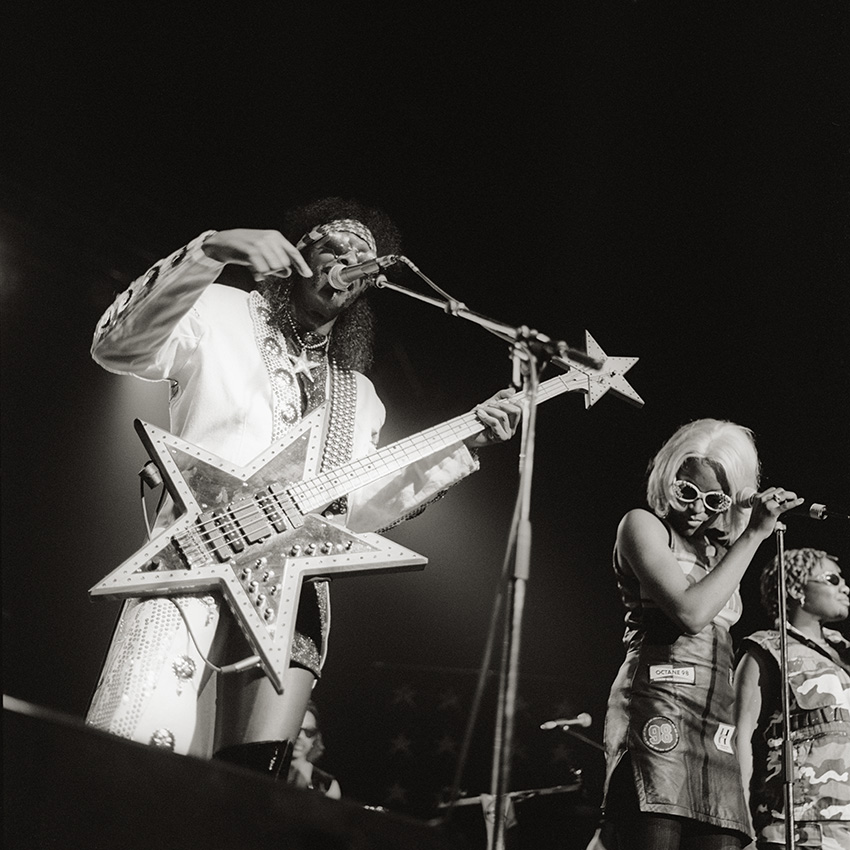
Immediately, Bootsy fell in love with the sound and design of the bass, playing it across the majority of his solo work with Bootsy’s Rubber Band as well as later material with the P-Funk unit. Throughout the years, Bootsy has played countless variants of his iconic Star Bass, including versions with up to four pickups and active MIDI outputs. Warwick currently produce a signature variant of the bass, which you can check out here.
Warwick Bootsy Collins Signature Infinity Bass
In addition to his signature Star Bass, Bootsy and Warwick also teamed up in 2009 to create the Bootsy Collins Signature Infinity Bass. Featuring a thinline construction, the Infinity Bass featured a largely over-the-top design featuring an airbrushed sparkle finish with star and flame decals, and was loaded with a humbucker in the bridge position for extra punch.
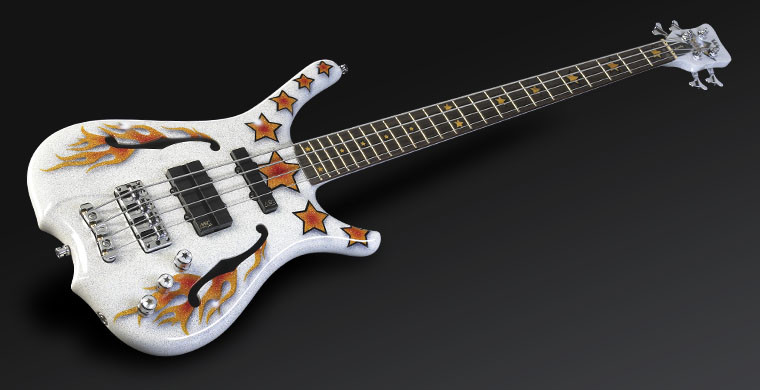
Amplifiers
When playing with James Brown in the early ’70s, Bootsy played through an Ampeg SVT head, using the natural warmth of the amp to highlight his distinct mid-range sound.
In the studio, Bootsy tends to run SWR Mo’BASS and a Hughes & Kettner BassBase 600 head, which are fed into Warwick Hellborg preamps and power amps, with four custom made 4×15 cabinets loaded with Electro-Voice speakers.
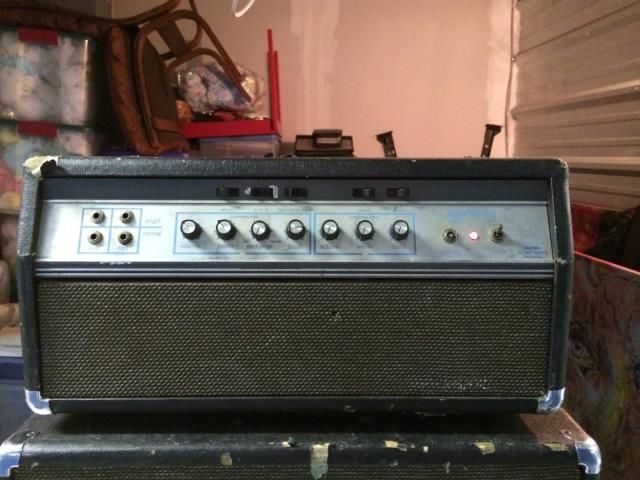
For live work, Bootsy uses a hectic set-up to highlight his mastery over all frequencies, consisting of an Alembic F2B preamp, two Crown Micro 5000 power amps, two Crown Micro 3600 power amps and eight custom made cabinets – two 4x18s, two 4x15s, and four 8x10s, all loaded with Electro-Voice speakers. That’s a lot of bass.
Effects
In addition to being the funkiest man to ever play a bass guitar, Bootsy Collins is often recognised for being one of the first bassists to use effects pedals, boasting a vast collection of vintage and boutique effects for both live and studio work.
Since the ’70s, Bootsy has been a devout user of the Musictronics Mu-Tron III Envelope Filter, using the pedal to create a squelchy, synth-like tone when playing leads or slap. Bootsy’s use of the Mu-Tron is long revered as being the holy grail of funk bass playing, with contemporaries such as Larry Graham and Flea also using the effect in a similar manner.
Bootsy is also a big fan of EHX pedals, and is a notable user of effects such as the Big Muff, Key-9 and Microsynth throughout much of his work. He’s also used oddball pedals such as the Digitech Whammy, Eventide TimeFactor Twin Delay, DOD Grunge and a GigFX Sub-Wah. Seems like Bootsy’s got it all covered – God bless him.
Listen to Parliament’s first album in almost 40 years here.
